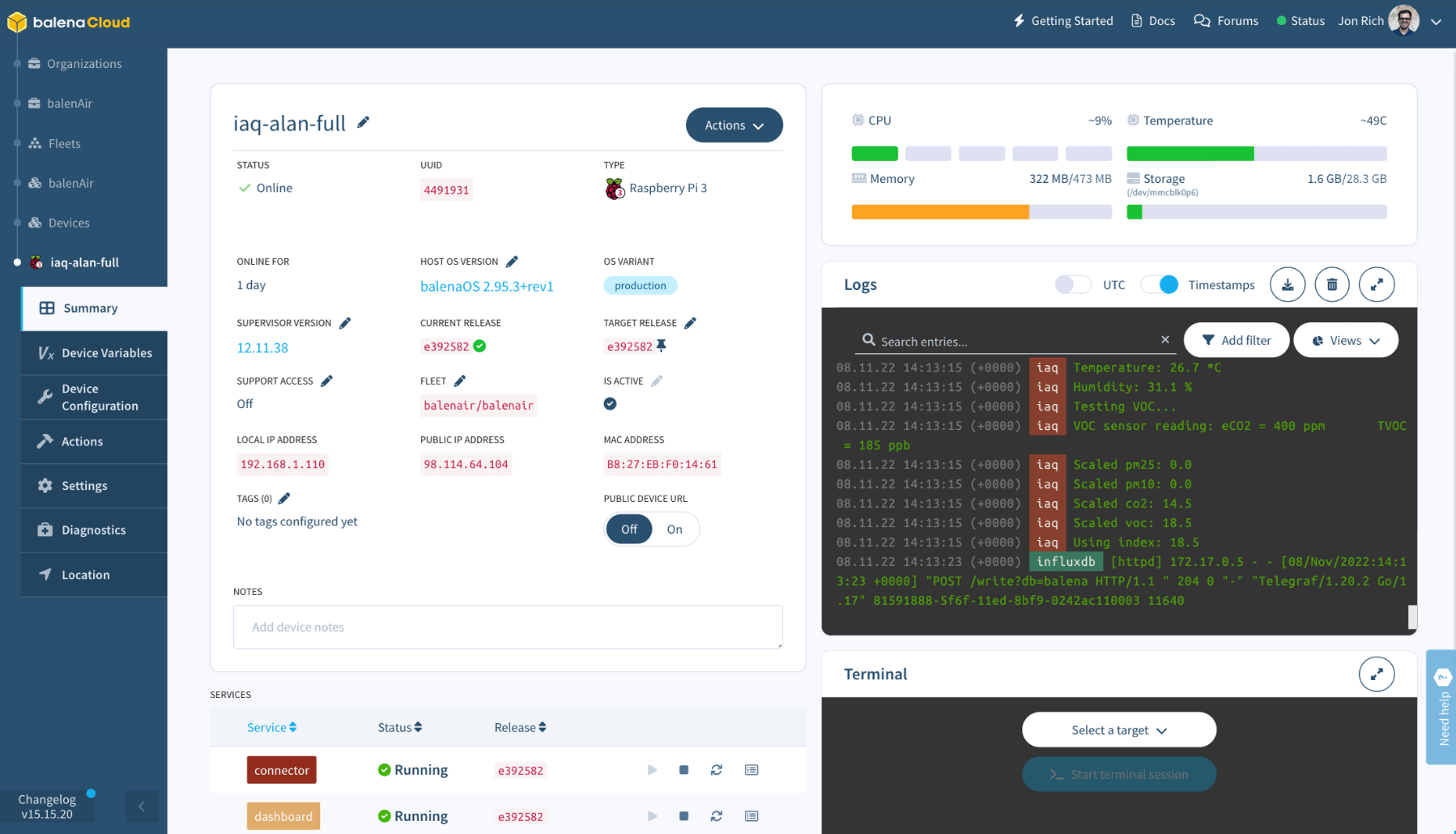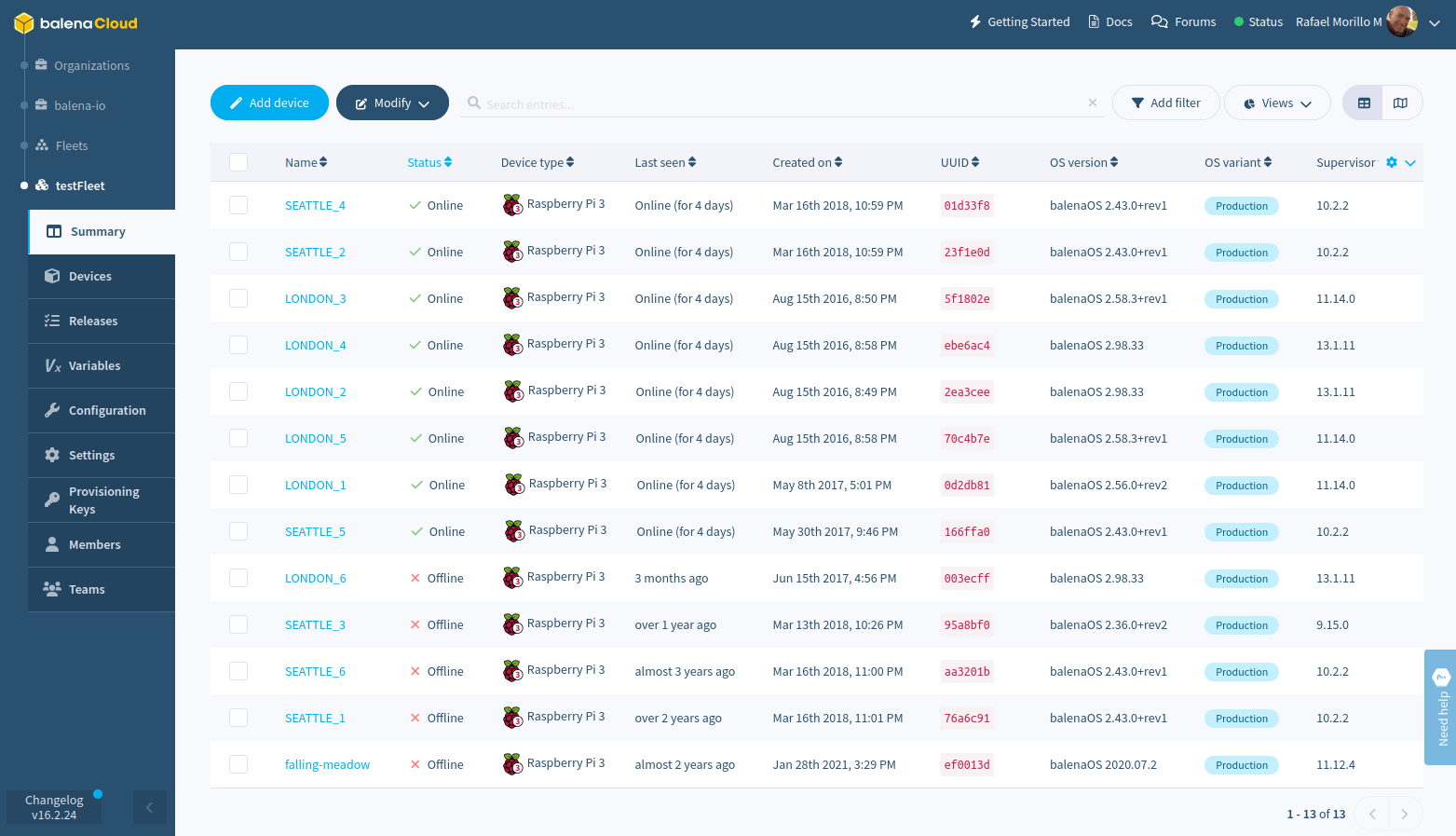Rapid growth typically depends on an ability to scale quickly—from shipping logistics to global distribution and coordination—but these efforts are largely unseen and underappreciated. Seeed Studio understands these challenges intimately, and is ready to share insights about their hugely successful SenseCAP M1 rollout with balenaCloud, including specific thoughts on balena’s built-in scaling mechanisms, such as preloading and registration, as well as their positive impression of balena’s security architecture.
Image: Seeed Studio
Who is Seeed Studio?
Seeed Studio, founded in 2008, is an innovative IoT technology company. They focus on edge computing , network communication and intelligent sensing hardware and software design for large scale. They also collaborate with global developers to bring the latest technology to leverage digital transformation of traditional industries. Over the years, their business has expanded to include end-to-end solutions across a variety of industries, from agriculture to smart cities, working collaboratively with some of the industry’s best known system integrators and distributors.
We caught up with Kevin Yang, a Product Lead who has spent over 8 years with Seeed Studio, and today is focused on SenseCAP advanced sensing and communication products, such as industrial sensors and LoRaWAN® gateways, and in particular, some of their latest turnkey products which are ready to deploy straight out of the box.
When talented engineers meet a platform that scales
While we’ve all heard various Cryptocurrency and Blockchain news stories over the years, one story in particular stands out—the Helium Network’s rapid and global deployment of LoRaWAN® gateways. The goal of the Helium community has long been to build a decentralized network for IoT devices, and to connect them in a way that is both inexpensive and self-perpetuating. To do this, Helium community members purchase Helium Hotspots and connect them to their home network over Ethernet or WiFi, bringing connectivity to any devices nearby. The first iteration of Hotspots provide connectivity via the LoRaWAN® protocol to any IoT devices that also use it, and as long as that Hotspot continues to offer Proof of Coverage.

Image: Seeed Studio
What’s unique about this story is that much of the excitement around the Helium Hotspot rollout was growing in the Spring of 2021—just as the effects of COVID-19 were really beginning to affect the chip manufacturing and components distribution industries. The result was a sudden hardware supply shortage that coincided with a tremendous spike in customer demand. At the time, Seeed Studio already had plenty of experience with global hardware distribution, but they nonetheless worried about how they might scale from zero to tens of thousands of devices in just a matter of months.
Thankfully, after trying several remote management and developer solutions, Seeed determined that balenaCloud was the right fit for this. In Kevin’s words, “Everything was about scale, reliability, and finding a mature method in the market that was already proven to work.” And scale they did. At the start of 2021, Seeed Studio hadn’t yet heard of balenaCloud, and by the end, they were managing near 200,000 devices on the balenaCloud platform.
How did they get there so fast?
In speaking with Kevin, we learned a few keys to their success.
The first key he shared with us was the ease of getting started with balena. He explained, “we didn’t need any tech support when we were onboarding—we just tried out the balenaCloud platform with a Raspberry Pi, downloaded the official balenaOS images, flashed our SD cards following balena’s steps… and then the importing process was simple. Overall, the experience is a good one”.
Because the platform is easy to learn, Seeed didn’t need to waste time getting demonstrations of the product, working with technical support, or stressing through delays from any other major technical hurdles. This was critical for them—even a delay of a few months could have cost them this opportunity.
The second key Kevin shared, was that Seeed makes the most of balena’s entire tech stack. Here is how Seeed uses balena, from development to integration to production:
-
Seeed engineers use balena’s CLI for preloading and pre-registering images. This allows Seeed to configure the user experience before the hardware is even packaged, allowing them to test all functionality before shipping.
-
Engineers use balenaEtcher for flashing those preloaded images to devices.
-
The product team chose to use hardware which was already balena-supported, and available to them as a manufacturer even during a struggling electronics market, for quicker onboarding.
-
Pre-registration allowed devices to come online in balena’s management dashboard as users connected them to the internet, so the process of connecting to balenaCloud happened automatically and without interaction from their users.
-
Once deployed, Seeed made use of balena’s granular update strategies for deploying hostOS and application updates safely and in stages.
-
As part of their warranty for customers, Seeed continues to use balenaOS’s extensive debugging capabilities to troubleshoot any issues that crop up over time.
Another interesting key to Seeed’s success is that they use the platform themselves as part of the device fleet management system. As Kevin explained, “Balena cloud plays an important role in SenseCAP turnkey solution, which we can leverage and wrap up into our dashboard, providing a better overall user experience. Eventually, keep their devices alive and healthy”
The fourth key to Seeed’s success is in how they use balena for their global operations: “balena provides a good way for remote diagnostics. We have a tech support team who offers global technical support for users from different time zones. They have to help customers who are usually not so tech savvy, to maintain their network or devices, help clean the cache, or somehow debug their issues. Balena provides an easy way for remote diagnosis by using the Balena console… and yeah, that’s… that’s cool.”

Image: balenaCloud demo dashboard (Device Summary view)
Scale and security go hand-in-hand
While speaking with Kevin, some of the biggest concerns he had through the process of deploying this large fleet came to light.
Specifically, he said, “when you have a large amount of devices to manage, the first thing you are worried about is security? Will a device be offline, all of a sudden, because of a technical reason, or because of ‘the network attack’?” When we asked him to share a bit more about his thoughts on the security of balena’s platform, he shared, “the security architecture of balenaCloud, from how you provision, to managing security keys, I think is well designed.”
Meanwhile, the developer experience was critical to their success as well. Kevin says, “The user experience, especially for the developers, is key. Our developers should not have to worry about the OS level; they should just be able to focus on their application, or the container’s app.”
When we asked Kevin what the one thing he felt balenaCloud made easiest for him to do, he had one word: scale. To him, balena’s greatest benefit was its ability to handle “large scale.” “I mean, that’s going to mean 100K or 200k devices… it’s important.”

Image: balenaCloud demo dashboard (Fleet Summary view)
A tale of growth and partnership
Of course, there’s nothing better when various companies succeed with each others’ help, than continuing to find new ways to grow together. With Seeed and balena well experienced working together, from the initial stages of prototyping to large scale deployment, we’ve begun offering support for more Seeed hardware on balenaCloud. To give you a quick sense, they support a huge slew of architectures, from generic x86 boards like the Seeed ODYSSEY, to hardware more specialized to Machine Learning, like NVIDIA Jetson SoMs and carrier boards.
The short version is, if you’re looking for partners who can work with you to quickly understand and get painlessly through the journey of scaling your IoT fleet, look no further than balena and Seeed.
Attribution: LoRaWAN® is a registered trademark of the LoRa Alliance®.

